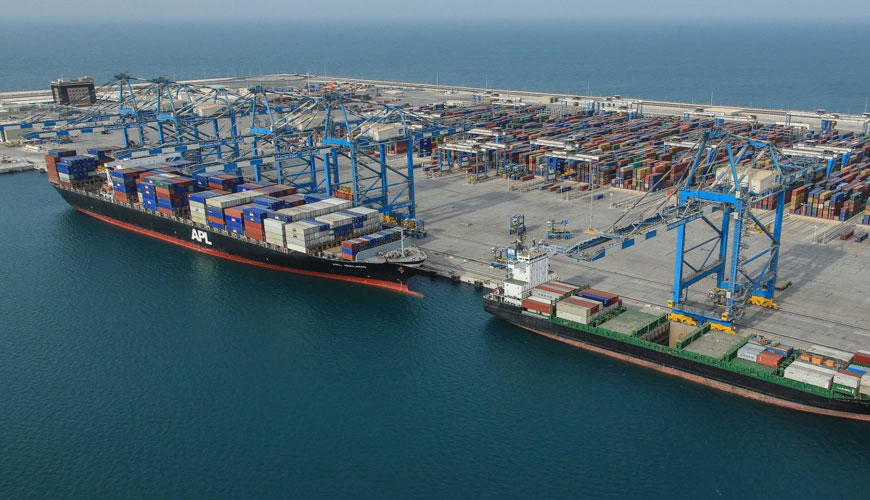

EUROLAB, with its state-of-the-art accredited laboratories and expert team, provides precise and fast testing services within the scope of EN ISO 13174 testing. EN ISO 13174 defines the means to be used to ensure the efficient application of cathodic protection to submerged and driven/buried metallic exteriors of steel port, harbor, coastal and flood defense facilities in seawater and salt mud.

EN ISO 13174 specifies the cathodic protection of fixed and floating docks and port structures. This includes piers, piers, dolphins (anchoring and berthing), plate or tubular stowage, pontoons, buoys, floating docks, lock and sluice gates. It also specifies the cathodic protection of the submerged areas of the inserts when not electrically isolated from the structure, such as the chains attached to the structure.
EN ISO 13174 is to be used in relation to cathodic protection systems where anodes are exposed to water or salty mud. For buried areas, typically behind piled walls or inside filled caissons, soil or sand-filled areas that can be significantly affected by corrosion, specific cathodic protection design and operating requirements are defined in EN 12954 with anode exposure to soil.
EN ISO 13174 does not cover the cathodic protection of fixed or floating offshore structures (including marine loading buoys), submarine pipelines or ships.
EN ISO 13174 does not include internal protection of the surfaces of any component, such as ballast tanks, interiors of floating structures, flooded compartments of lock and sluice doors, or interiors of tubular steel piles.
As parts of the structure may be made of metallic materials other than carbon steel, the cathodic protection system must be designed to ensure complete control over any galvanic coupling and minimize risks due to hydrogen embrittlement or hydrogen induced cracking.
EN ISO 13174 is applicable to the entire submerged area in sea water, brackish water and saline mud and associated buried areas, which can normally be found in port, harbor, coastal and flood defense facilities wherever these structures are stationary or floating.
For surfaces that are alternately immersed and exposed to the atmosphere, cathodic protection is only effective when the immersion time is long enough for the steel to become polarized. Typically, effective cathodic protection is achieved for all surfaces below mid-tide.
EUROLAB assists manufacturers with EN ISO 13174 test compliance. Our test experts, with their professional working mission and principles, provide you, our manufacturers and suppliers, the best service and controlled testing process in our laboratories. Thanks to these services, businesses receive more effective, high-performance and quality testing services and provide safe, fast and uninterrupted service to their customers.
To get an appointment, to get more detailed information or to request an evaluation, you can ask us to fill in our form and reach you.